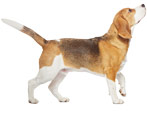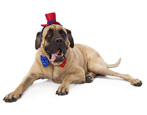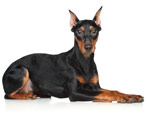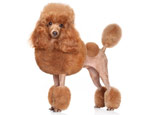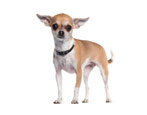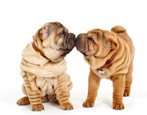Dog training is a prerequisite for raising an animal adapted for life next to a person. This is an integral part of the socialization process necessary for each pet. In addition to generally accepted training courses aimed at developing obedience, mastering the basic principles of behavior at home and on the street, there are special ones. They are needed by hunting, shepherd, guard dogs, search dogs.



An inexperienced owner is always difficult to start working with a pet. How to teach puppies teams at home? Where to start and how to act to succeed? The list of commands and the rules of training for beginners will help you learn the basics. But before you begin to practice, it is worth familiarizing yourself with the theory in as much detail as possible.
Especially since not all breeds respond equally well to training, and the speed of achieving the result often depends on the correct timing for the start of classes.



Which breeds are easier to train?
Individual character traits are not only in people. Animals also have different inclinations and abilities to master various skills. When choosing a breed, you should pay attention to such important points as sociability, level of intelligence, controllability. A conflict-free dog will become a good pet for a person with no experience.
Among ornamental breeds, well-trained animals include poodle, maltese, welsh corgi, pomeranian, papillon, sheltie. The hunting breeds are quite easy to master: Spaniels - English Cocker, Russian, Springer, Kurzhaar, Espanyol Breton, Weimaraner, as well as Labradors and Retriever.
Representatives of the group of shepherd dogs are also famous for their high intelligence, but they are often quite wayward and are guided only by their own preferences in training. Here, among the leaders in terms of learning, Border Collie, Longhair and Shorthair collies can be noted.
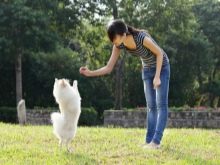


Service breeds of dogs have a high level of intelligence, but their training is recommended to be trusted only by experienced dog handlers or ownersready to show leadership skills. German shepherds, rottweilers, Belgian shepherds (tervuren, lakenua, malinois) need a solid hand. But their intelligence allows for quick memorization of commands and maximizes the potential of the animal in performing a variety of tasks.
Some dog breeds are initially difficult to train and even spend a lot more time to master the basic course of teams. On average, it takes from 80 to 100 repetitions to develop one skill. The future owners of the Afghan Hounds, Bassenji, Russian Canine Hound, Bloodhound, Chow Chow are preparing for the difficulties. Moreover, the problems are usually not associated with the general intellectual capabilities of the animal.
As a rule, animals loving and wayward are animals that, by blood, are closest in genotype to their wild ancestors.

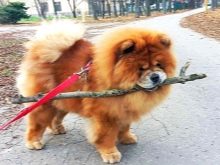

At what age should start training?
Choosing the right moment to start training your dog is incredibly important to the overall success of the whole thing. The puppy gets his first training experience from the moment he gets into his house. This usually occurs between the ages of 1 to 3 months. From 12 weeks, the animal can begin to master the first commands, memorizing gestures. Up to this point, the baby is enough to study the nickname, accustoming to the tray or paddock, leash, collar.
Some breeds are characterized by slow growth. They later come to puberty, and the animals themselves generally retain their characteristic "puppy" carefree longer. Here, serious education begins from 6 months, and until that moment it is replaced by active socialization. The dog is introduced to other animals and people, taught to stay calm when traveling in transport, changing the landscape or situation.

Where to start training a puppy?
The initial stage of training is always difficult for both the owner and the dog. Professional dog handlers recommend a strict order from the very beginning. You need to conduct training on a site isolated from outside interference, frightening sounds, and distractions. Even if classes are held in a group with an instructor, this order does not change. It will be useful for the owner to have additional equipment that allows you to teach the dog submission by various methods.
Among the useful devices for training can be noted such.
- Clicker. The subject for fixing the conditioned reflex is used in training methods that are not associated with tight control and submission. In this case, the dog, in the case of the correct action, hears a click of the clicker and receives a reward. The device has a simple mechanical design, is not subject to wear, managed to prove its effectiveness in raising a wide variety of animals.

- Whistle. The simplest subject, actively used in the training of hunting dogs and representatives of other breeds. The simplest team that can be mastered with its help is “to me”. Due to the fact that the whistle in a special sound range is carried much further than the voice, this method is convenient for calling a dog. Even at a considerable distance, the pet will be able to recognize the command and execute it.

- Bag for treats on the belt. To quickly accustom the animal to the execution of commands, most owners and trainers use delicious top dressing. But carrying it in your pocket is not too convenient. A compact waist bag allows you to teach the animal the basics of training without staining food pockets.

- Leash and collar. They should be the size of the dog, taking into account its age, body structure. Some breeds need to replace the collar with a harness so as not to harm the growing body.
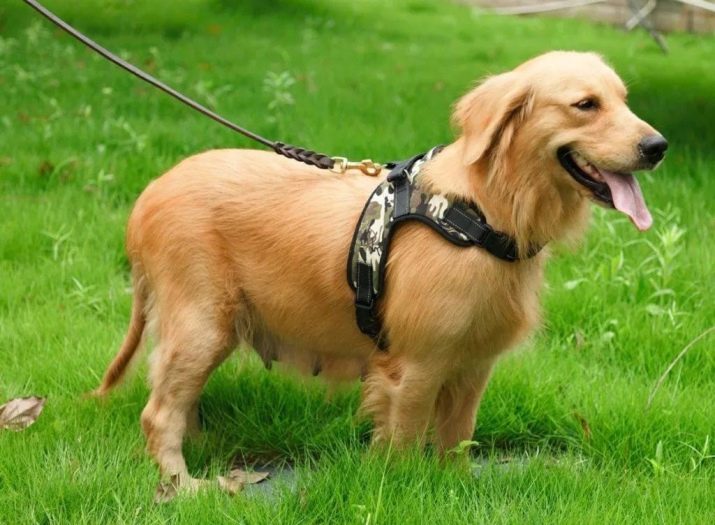
- Stack. It is used in courses of protective and guard duty, it is necessary to train the animal to continue working even with physical impact. The owner should not use it independently.
It is forbidden to use the stack as an instrument of punishment or coercion, otherwise instead of raising courage in a pet, cowardice can be aroused at the sight of an unpleasant accessory.
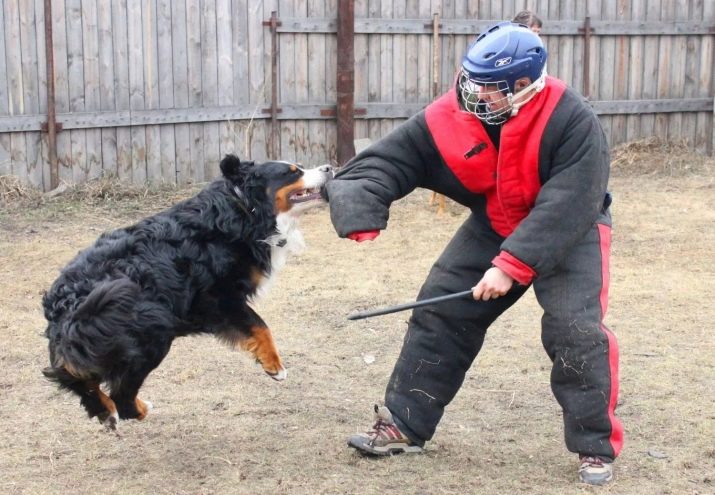
- Toys for training. Rubber dumbbells, frisbee and other aport items allow you to make the process of mastering teams more diverse, makes it possible to convey important information to the animal in a playful way.


Starting training a puppy, it is very important to act gradually, to avoid pressure and aggression. Among the simple rules that will help make interaction with your pet more productive, you can highlight:
- clear and precise statement of tasks;
- search for an individual approach, taking into account the nature of the animal;
- the use of specific gestures and signals;
- compulsory reward for correctly performed action;
- presentation of information in a fun way;
- careful calculation of time for classes - they should not be too tiring.
The relationship with the puppy also matters. He must perceive the owner as a friend, but recognize his authority. The dog will definitely remember fear or aggression, and later experienced negative experiences can create problems in training.

Preparation: obedience training
The obedience course, which allows you to master the minimum set of commands, is referred to the basic training of the dog. A significant part of the skills acquired is endurance. The ability to stay in place at the command of "sit" or "lay" will allow further development of much more complex training programs. In addition, this skill will be useful in monitoring animals on the street.
As part of the basic training course, the dog must master the necessary minimum of knowledge in stages. The duration of one lesson should not exceed 60 minutes. In the course of preparation, it is important to determine the equipment and promotion of the animal.
It is convenient to take the chosen delicacy with you in an insulated waist bag. In the first months of training, the collar and leash will be a mandatory addition to working with animals.

Careful selection of a training venue is also very important. If there is no equipped area in free access, you can use any desert terrain where there are no distracting factors or sources of danger (cars, large aggressive animals). When choosing a place previously unfamiliar to the animal, it is first necessary to give the dog the opportunity to properly explore the new territory.
In the hot season, it is recommended to conduct training in the morning or evening hours before feeding.

List of teams and training methods
Among the most popular in the professional environment teaching methods are several.
- Mechanical method. It consists in passivating the participation of the animal in the training process. To achieve the desired result, the owner simply fixes the desired skill, creating the conditions for the mandatory execution of teams. This approach is considered effective, but is suitable only for pets with high compliance to the will of others - more wayward dogs will simply resist physical, psychological pressure.
- Operant method. In this case, the dog becomes not a passive performer, but an active participant in the process.The trainer acts by reinforcing the positive actions of the animal and ignores or tries to prevent unwanted actions. So the dog gets the opportunity not only to learn, but to think and act independently if there is such a need.
- Tasteful. When the dog is not forced into action, but is prompted to it. Upon reaching the desired result, the animal receives a treat. It is believed that the founder of the method was the famous trainer Durov. Today it is used mainly when working with puppies and dogs of decorative breeds.
- Contrast During training, both food irritants and mechanical effects are used. If the animal does not perform its tasks voluntarily, it is forced to do so.
- Imitative. It is built on the principle of “do as I do”, it is used in official dog breeding and hunting, when dragging young animals on the example of the actions of senior comrades. The imitative method is based on natural instincts - this is how puppies repeat their mother’s meal or participate in games. But it is only suitable for fixing permissive skills.
When working with animals, voice commands can be used, sound or manual (in the form of gestures).

Simple commands
All kinds of simple commands that you can teach a dog at home are studied by the puppy in the first months of life in the house. If you properly encourage the animal, you can easily teach your baby the basics of behavior in the house. Giving a treat is necessary as an element of fixing the necessary skill.
If you regularly train the basic set of commands, you can properly prepare the animal for further socialization, teach the puppy trust and obedience.
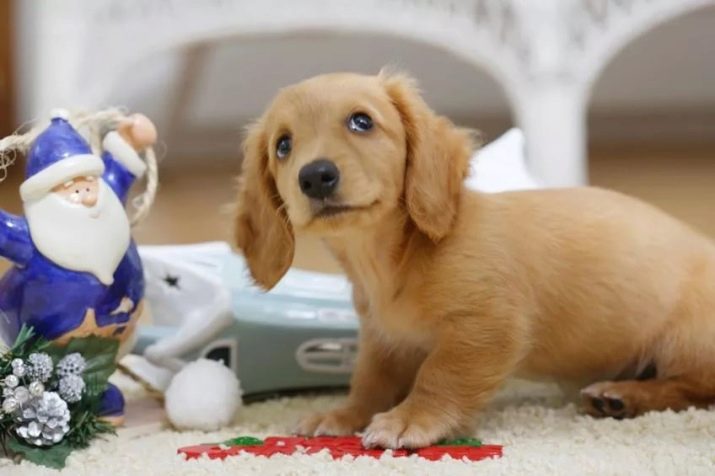
"A place"
The team accustoms the puppy to stay in the corner allocated to him on the litter in any circumstances, including in extreme situations. At the age of up to six months, it can be replaced by other prohibitive measures. If the animal does not demonstrate good enough behavior, it is simply sent to the place, depriving the desired entertainment or society of the owner.
In the future, this skill will be useful in mastering the skill of endurance.

"It is impossible"
Prohibition command that suppresses unwanted actions. No matter how charming and cute the pet is, this team should definitely be one of the first to learn from the age of 1 to 3 months.
For decorative dogs, this skill may be one of the few elements of compulsory training.

“Stop”
Useful at the beginning of the pet walking on the street. This command allows you to instantly suppress unwanted actions of the dog. For example, if the dog escapes from the site or tries to cross the road on its own.


Main teams
The main teams are trained on the basis of OKD or UGS courses. The first of them is more complex, it allows you to prepare the animal for the more complex stages of training. For example, a test of cowardice - a reaction to a shot, allows you to check the dog’s readiness for the development of protective and guard duty. A tooth show will be needed at the exhibition - in the ring, the dog must meekly demonstrate the jaws to everyone without aggression.
Wearing a muzzle also allows you to check the readiness of the animal to comply with the rules of life in the city.

"Fu"
A team trained exclusively by coercion. It is associated with the mandatory suppression of unwanted actions, developed from an early age. Seriously demanding its implementation can be achieved when the dog reaches the age of 6 months. Until this time, the operant method should be used to prevent situations in which the dog may come into contact with objects or objects that are undesirable for him.

"Nearby"
The dog must walk at the owner’s left foot on a sagging leash or without it. When executing a command the animal should not move away or run forward. The tension of the leash, if any, is excluded.

"Give"
Mandatory team that establishes the status of a leader in the "pack" for the owner. Even a welcome bone, a bowl of food picked up on the street the animal must give garbage on demand.
If necessary, the method of coercion is used, in any case, the execution of the command will have to be sought.
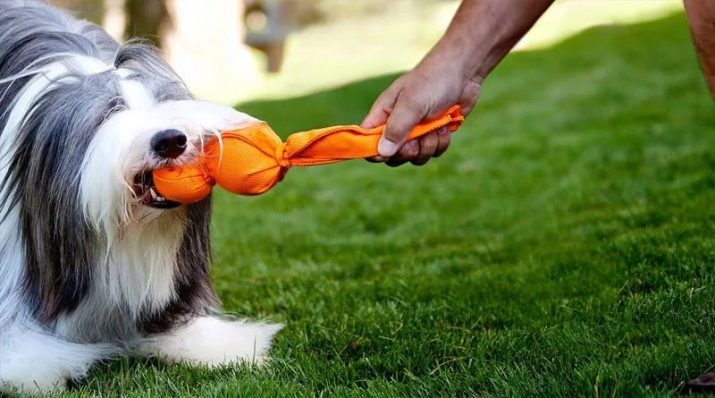
"To me"
One of the first mastered animal teams. But if it is permissible for a puppy to run at the call of the owner of his own free will, an adult dog must strictly follow the requirement. In official dog breeding, a special gesture is most often used. Hunters and shepherds use whistles to summon a pet.

The complex "Sit / lie / stand"
These basic requirements are not at all useless. Having worked out the skills to automatism, it is possible to ensure that the animal stops in case of undesirable actions or when manifesting immoderate emotions. You need to teach them with a dog in stages, from 5-6 months, adding gesture control to voice commands.


Aport
The team from service dog breeding, migrated to general training. Using it as an interesting game, it is easy to ensure the supply of almost any item, and on the hunt it can also tow game on water or in the field. Service dogs on the command "Aport" perform a search.

Fancy team
Unusual are tricks or special teams that allow you to induce a dog to perform unusual actions. Sometimes only the name is non-standard. For example, "Tubo", served by a cop, was preserved from the French language. And many tricks are called on a specific circus slang.

"Bunny"
This team is also known as Serve. Especially it is possible for small dogs that easily maintain balance in a sitting position, raising their front paws. Training will be easy if the owner is armed with his favorite pet treat. A hand with food is placed behind the head of the animal, encouraging its desire to reach out to the promotion, without lifting the croup from the ground.

"Snake"
The team consists in passing the animal under the owner’s foot, which is set forward and bent at the knee. A useful skill looks like a spectacular trick. But in agility, the ability to correctly overcome slalom is the key to successful passage of the track.

"Bow"
One of the easiest tricks. It is carried out from a standing position, with the curvature of the shoulder blades down. The first experience is obtained with a combination of mechanical action and goodies. The skill is fixed quickly enough and the dog gladly fulfills the command in the future.

“It's a shame”
Dog Trick lying position with front legs covering the muzzle. It is very popular in the circus and is easily mastered by animals after a certain number of repetitions. Using a small piece of masking tape at the eyebrow, you can induce the animal to make the necessary movements.
The skill is reinforced by encouragement and a voice command.

"Tubo"
A special prohibiting command given to a gundog dog during a hunt. Similar to the requirements of "You can not", "Fu." Allows you to provide a stop action of the animal that could harm the actions of the hunter.

"Somersault"
A classic trick performed from a prone position. With the help of goodies, the animal is transferred to the position on its side, then on its back and makes a complete revolution. With due diligence, the skill can be worked out with repeated repetition, having achieved effective execution of the stunt by the dog.

"Dance"
The ability to walk on the hind legs is mainly enjoyed by dogs of small and medium sizes. After learning the skills of standing still on the hind limbs, the pet can go on to waltz or dance. In the first case, the performance of the stunt will be paired. "Dance" is performed solo, the dog's back remains in a strictly upright position. At first, the animal should receive a treat after 3-5 seconds.

Useful Skills Training
There are a number of teams that are used in official dog breeding or belong to the category of additional, not included in the list of standard courses. Some of them are necessary in everyday life.
“Seek” or “Sniff”
These commands in official dog breeding are used to search for objects by smell, to follow the trail. In ordinary life, a sensitively developed sense of smell is necessary for hunting dogs and shepherd dogs.


"Alien"
A useful command to stop the manifestation of friendliness to an outsider. The more distrustful a pet is to strangers, the easier it will be to protect it from theft or to teach the basics of protective and guard duty.

"Wait"
The basics of endurance training allow the dog to be in the position set by the owner for a sufficiently long time. In this case, the animal receives an additional command “Lie”, “Sit” or “Stand”. The letting go team is “Walk” or a call to the owner, if he is at a distance.
It is also useful to train the animal on the "Place" command to go to the point indicated by the leash or other object and stay there until new orders.

"Crawl"
A team useful in official dog breeding and agility, ensuring the dog is moved from a prone position without lifting to its paws. In this way, obstacles that cannot be jumped or run around are overcome.

"Walk"
A letting-out team used mainly in official dog breeding. With its help, the animal performing the task is sent to rest. The rest of the time it is either in place or located next to the owner.

The necessary minimum for the exhibition
A thoroughbred animal, which is planned to be used in breeding, requires mandatory participation in exhibitions. Here, its features are evaluated, a conclusion is given on the compliance of the phenotype of the animal with established standards. But before you send your pet to the show, you must make sure that he received the necessary education, learned the basic rules of behavior at such an event.
Among the mandatory requirements for any breed will be the following points.
- Calm, restrained behavior. The dog must not react to other dogs in the ring, withstand, without aggression, the touches of strangers.
- Willingness to inspect teeth, check the auricles, genitals (in males for cryptorchidism).
- The ability to stay in the exhibition stand for a long time. During this period, the animal must maintain the most winning pose.
- Pass in a circle and back and forth, movement in a triangle with given points. All these skills should be rehearsed in advance.
- The ability to wear a ringwithout pulling or loosening it too much.
If you plan to use the services of a hired handler in the ring, you should find it in advance and introduce it to the dog.



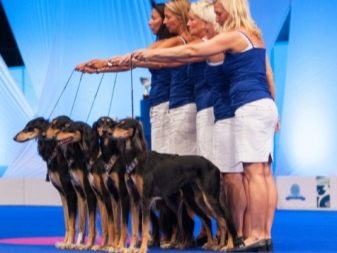
How to teach to protect the owner?
In order to learn protective and guard duty, the animal must first undergo a general training course. After that, you can proceed to the development of the team “Fas” - the main call for an attack. It is recommended to study it at a special site and under the guidance of an experienced instructor. In working with the dog, a special suit or sleeve is used, on which the aggression of the animal is directed. Teasing the animal, using the stack and other sources of discomfort, the instructor achieves the desired reaction.
After the initial development of this skill, one can practice the detention or immobilization of the intruder in action with the simulation of a real attack in conditions close to the natural environment. To raise an animal that can carry out protective and guard duty, it is necessary to limit the circle of its communication.
The owner should be only one, and family members are perceived as their own pack. Only guarded attitudes should be encouraged towards strangers.


Features of training different breeds
The desire to educate your pet yourself is quite natural.But it is worth remembering that the training of dogs of different breeds should take place according to their own rules. Important recommendations include sparing attitude to the training of dwarf and decorative animals. Dogs of these types usually learn tricks and go through a reduced general training course.
For especially naughty kids - papillons, pugs, shih tzu, Yorkshire terriers, the base team will be the "place". This is how any unwanted actions are suppressed. In addition, by sending to a place you can stop the flow of indefatigable energy of a pet.


Hunting dogs need to suppress certain instincts in everyday life. Their training starts from 6 months. Since that time, the animal adopts the basic principles of training. From 10 months, the full development of hunting skills begins.
For service and working dogs in training, the leadership qualities of the owner are very important. His authority must remain unquestioned.
These moments are especially important for work with representatives of Molossians, fighting breeds.


Common mistakes
In training it is impossible to do without misses. Each dog is individual, has a different level of stability of the psyche and needs the right approach to it. Among the most common mistakes owners and inexperienced trainers include.
- Change the sound of commands. When training this is completely unacceptable, because the animal simply does not understand what is expected of him. The team should be clear, understandable and the only true one. Otherwise, we won’t have to talk about developing obedience skills.
- Negligent treatment, neglect of animals. The dog should not experience fear or other negative emotions during training. Otherwise, any person who has used force against her will be able to subjugate another person’s pet to herself if necessary.
- Self-doubt. When starting training, it is necessary to pay attention to the tone and how the teams are given. To achieve good results, you need to clearly understand how the dog will act. Teams should not contradict each other or be given 2-3 at a time.
- Command Failure. If training is not associated with the obligatory achievement of results, it will be practically impossible to obtain obedience from the dog. A given command must be executed in full.
- Punishment after the execution of the command. You can’t summon a dog to scold him. This will violate the cause-effect relationship, will lead to the fact that the consolidation of skills will occur with difficulty.
- Aggression, scream aimed at the puppy. Dogs perceive human actions due to their physiology. If the animal’s actions cause a negative reaction, it will figure out how to avoid punishment the next time. If a puppy defiantly eats its excrement, most likely, it simply “destroys the traces of crime”. And the reason is the actions of the owner.
- Lack of clear rules of conduct. A dog begging pieces from the table should not receive them. If, by announcing the ban, the owner himself violates it, it can be difficult to talk about discipline in the house.
- Humanization of the pet. No matter how smart the dog is, it is dependent on the person and has a different mindset. Any training is not the result of persuasion and conversations with the animal. It is based on the development of reflexes and is associated with them.
- Wrong promotion. Approving the dog’s abnormal behavior, it is difficult to obtain submission from it. The rules of encouragement and neglect should be established once and for all.
- Lack of patience. It is imperative to bring the dog to the end. With some dog breeds, training turns into a real competition in stubbornness. And it is very important to establish your right to leadership in this battle.


Useful Tips
Both an adult dog and a puppy equally need to be raised.Of course, a boring course of general training with multiple repetitions is unlikely to seem to anyone an exciting pastime. But before tricks, interesting teams and sports are mastered, it is necessary to go through the basic stage. And here you can not do without the useful advice of specialists.
One of the main recommendations is the duration of classes. The length is considered optimal in 10 minutes with a repeat of 2-3 times a day for a puppy, and 30-60 minutes in the morning and evening for an adult dog. Timing is also very important.
The pet should not be too full or tired. Previously, the dog should be walked, allowing it to empty the bladder and intestines.


When working out the teams, you need to alternate the exercises, starting the lesson with repeating the material covered. Dainty encouragement should be combined with games and other forms of pleasure. Then the availability of food in the hand of the trainer in the future will not be the only decisive factor in obedience.
The older the dog, the more difficult it is to instill her training skills. This is especially true of the basic principles of behavior and prohibitions. But even if the dog is mistaken, it’s worth gently correcting his behavior, and not scolding him.
Obedience can be obtained by various methods. Select their pet should be individually.


You will learn how to properly train your dog to sit, from the video below.





